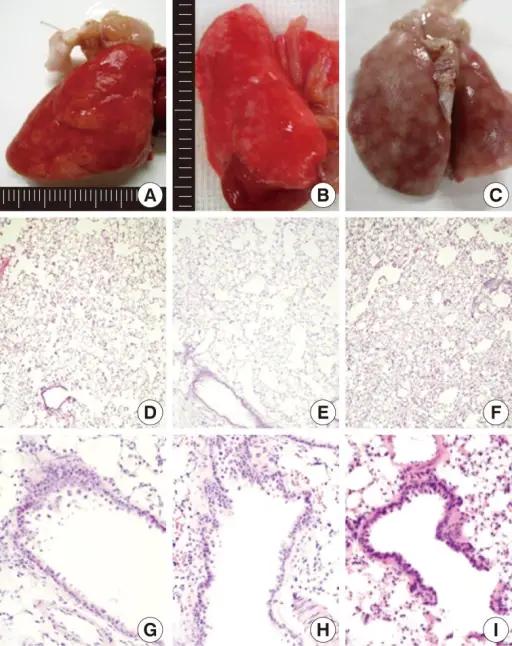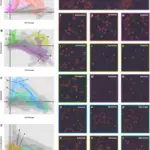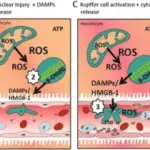The morphologic alterations in cell injury include the first biochemical changes and those that happen at a molecular level. Morphologic alterations need time to emerge. The alterations of reversible cell injury happen sooner than those of irreversible injury, like a myocardial infarction from a blocked coronary artery, for example. The irreversible damage to the myocardium occurs within half an hour to 60 min. Whereas light microscopic alterations of cell death can take 4 to 12 hours.
What are Morphologic Alterations in Cell Injury?

Gross (A-C) and microscopic (D-I) features of lungs exposed to sidestream smoke. (A) Group 1 (1-mo exposure to three cigarettes a day). (B) Group 3 (1-mo exposure to seven cigarettes a day). (C) Group 4 (3-mo exposure to five cigarettes a day). (D-F) Groups 2 (E) and 3 (F) show more prominent alveolar collapse and focal emphysematous change than the group 1 (D). (G-I) Group 2 (G) shows mild bronchiolar epithelial proliferation. Group 4 (H) shows bronchiolar epithelial cell proliferation, peribronchiolar inflammatory cell infiltration, and focal emphysematous change. Group 5 (I) shows peribronchiolar inflammatory thickening, and adjacent alveolar patchy emphysematous change.Evaluation of Bronchiolar and Alveolar Cell Injuries Induced by Short- and Long-term Exposure to Sidestream Smoke.
Kwon KY, Jung HR, Hwang I, Choi WI - Korean journal of pathology (2012). Not Altered. CC.


